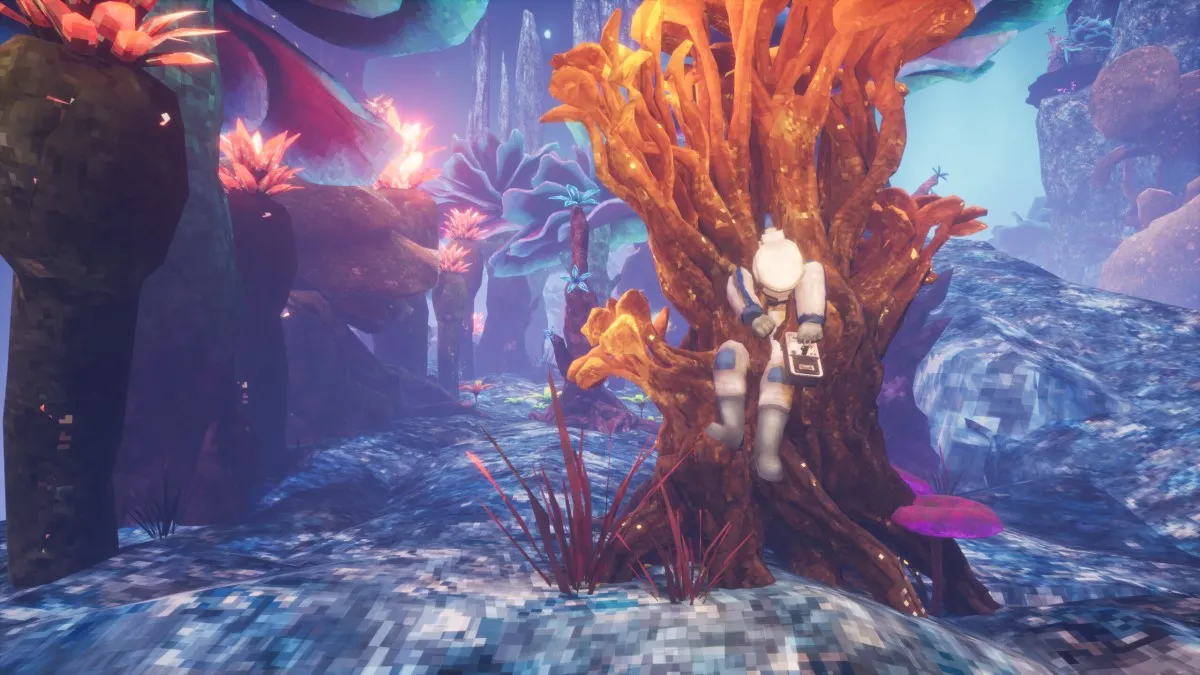Tend to it, and it will grow on you
If you’ve heard anything about Starseed Pilgrim, it’s probably that you need to experience it for yourself. This is very true. It also makes reviewing such a game quite the awkward predicament. I can’t give away the specifics of the game’s mechanics without spoiling what makes the game so great, so prepare to read some vague praise.

Starseed Pilgrim (PC)
Developer: Droqen
Publisher: Droqen
Release Date: April 16, 2013
MSRP: $5.99
Rig: AMD Athlon 7850 2.80 GHz, with 4GB of RAM, GeForce GTX 560 Ti GPU
Starseed Pilgrim is a game about curiosity, wonder, and discovery. The only real driving factor is the player’s own inquisitiveness about the game and its mechanics. There are no set objectives, cutscenes, or any other devices that many games rely on to spur the player forward. After a brief tutorial of the game’s digging mechanic, the player is thrown into the game world and left to figure out the rest.
In the world of Starseed Pilgrim, you play as a lone gardener in space, armed with a variety of seeds which can be planted to help unravel the universe. Your surroundings are made out of blocks which can be either enhanced by planting more seeds or removed by pressing the arrow key in the direction of the block while touching it. Each seed grows additional blocks in various ways and with different properties. All the while, another dimension is slowly but surely destroying the very ground on which you stand.
What kind of various ways and different properties do the seeds have? Well, that’s for the player to figure out themselves. Each of the assorted seeds grows blocks in their own unique pattern. It’s like the seeds have their own language, and it’s the player’s job to slowly interpret it in order to succeed. When first starting Starseed Pilgrim, it’s super easy to feel lost and useless.
“I don’t know why things are happening! Why am I even doing this?!”
Both questions are common early on, and both have solid answers that players will eventually figure out. Starseed Pilgrim chooses to teach players how to play it the best way it can: by having them experiment and incrementally figure it out themselves. After all, hands-on experience is the best way for players to really learn how a game’s mechanics work.
Figuring out the mechanics isn’t all that the game has to offer, however. There are objectives to be accomplished, but keeping in the theme of the rest of the game, they aren’t explicitly stated to the player. The objectives are based in curiosity: the player sees something and naturally wants to know what it is and what it does. Not everyone’s curiosity will be piqued; some players will likely lose interest in continuing the expedition pretty early on.
There is a semblance of a story, told through broken stanzas scattered across the world. However, these are intentionally vague and will seem meaningless to new players, which definitely won’t help their motivation to press forward.
Skill comes into play almost immediately. The game is not an easy one, as a lot of trial-and-error and adaptability will be required to get anywhere in Starseed Pilgrim. This will surely frustrate some players, which is completely understandable. With each failure, however, comes some insight as to why such a failure happened. It may, at times, seem like accomplishing specific objectives are borderline impossible, but the reality is that this is a game that demands a lot from the player. It demands that the player not only figure out its main mechanic, but master it as well.

While it is in no way easy to accomplish a lot of what the game asks of the player, the whole affair is made much more relaxing by the delightful sound effects emitted by each seed as it grows. Somehow, daunting tasks are turned into minor inconveniences through sound effects alone. The stark white background is the highlight of the visuals, enhancing the feeling of emptiness and loneliness that permeates the game. The rest of the visuals almost don’t matter; if this game was made in ASCII art, it would still be as powerful.
Starseed Pilgrim definitely isn’t for everyone. Its ambiguity requires patience to understand, and can at times feel like it offers little-to-no reward for considerable effort. Put simply, this is a game in which you get out what you put in. It is incremental in its brilliance. It is a game of pure mechanics and of player skill. It’s confusing in a good way and difficult in the best way. From a game design perspective it is perfect, but the ambiguity will definitely push some players away. Those who stick with it, however, will experience one of the most pure and wonderful videogame experiences in a long time.





Published: Jun 4, 2013 05:00 pm